Strong X1.1 solar flare erupts from AR 3615
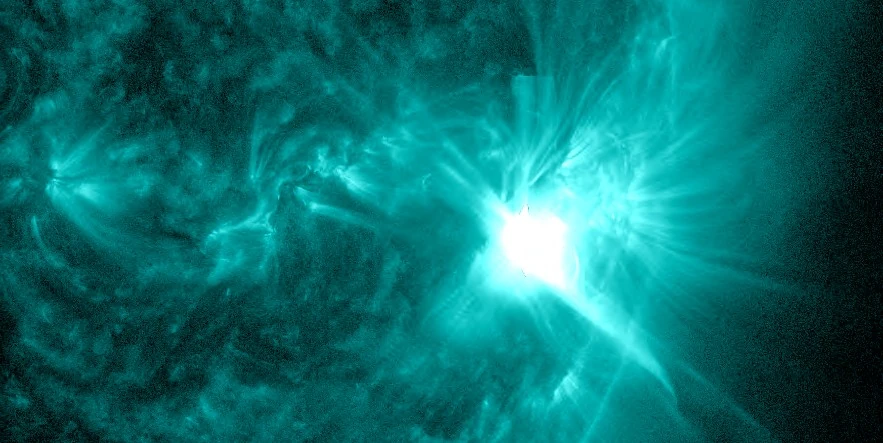
A strong X1.1 solar flare erupted from Active Region 3615 at 20:56 UTC on March 28, 2024. The event started at 20:50 and ended at 21:01 UTC.
This is the third M6+ solar flare of the day, following M7.1 at 06:29 and M6.1 at 15:56 UTC.
Same as with those eruptions, there were no radio signatures that would suggest a coronal mass ejection (CME) was produced. Subsequent analysis showed a CME was produced but modelling confirmed no Earth-directed component.
Radio frequencies were most degraded over the SW United States and the Pacific Ocean at the time of the flare.
Region 3615 has a beta-gamma-delta magnetic configuration and is capable of producing more strong to major eruptions on the Sun.
With this region now being close to the western limb, there’s an increased chance of solar radiation storms over the next 2 or 3 days. You can read more about it here.
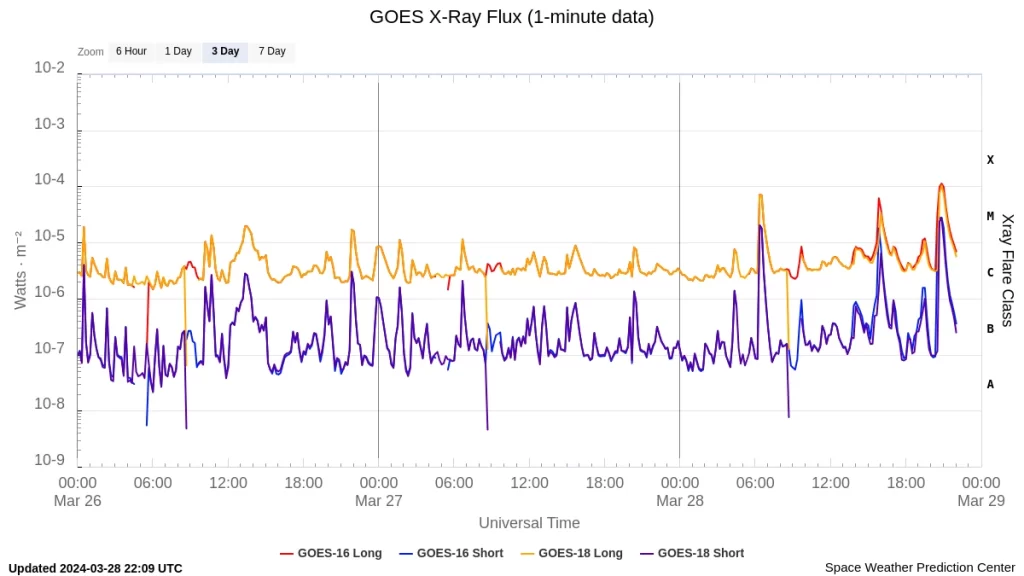
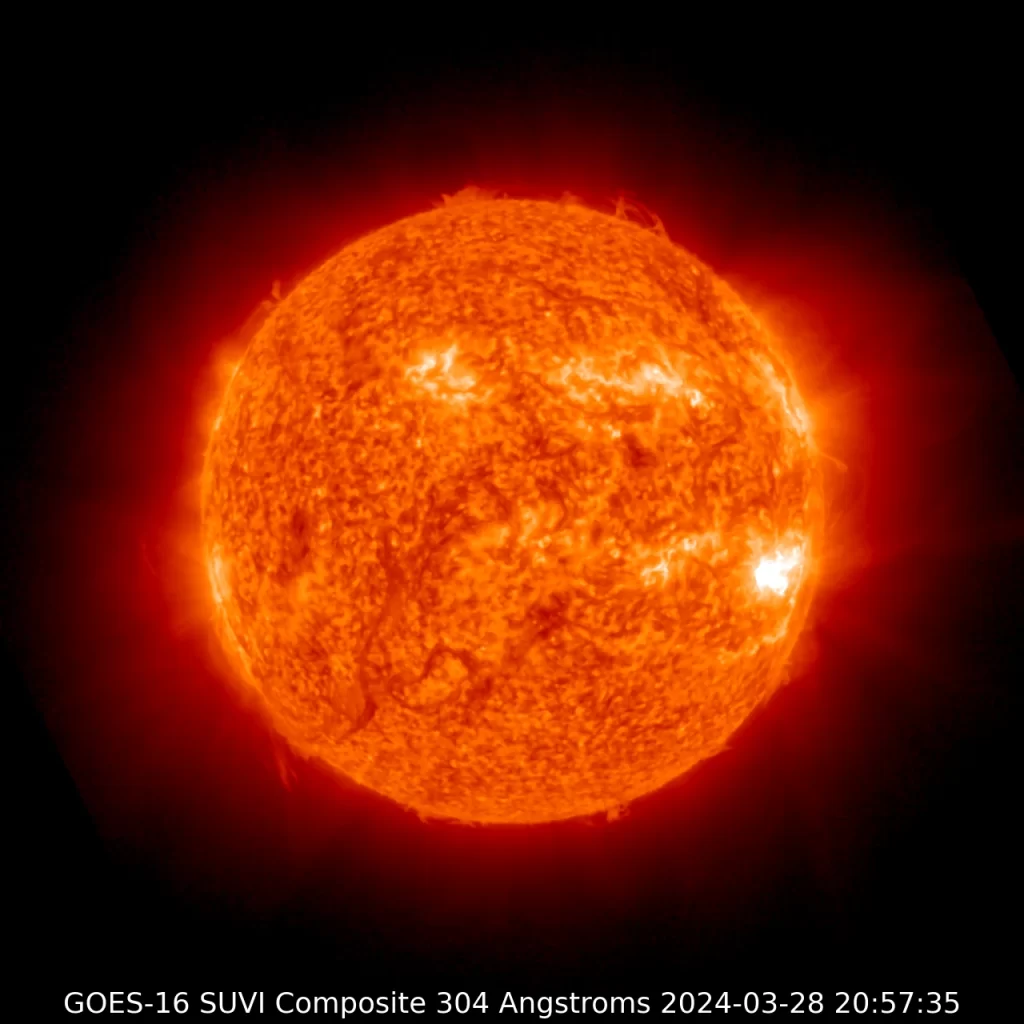
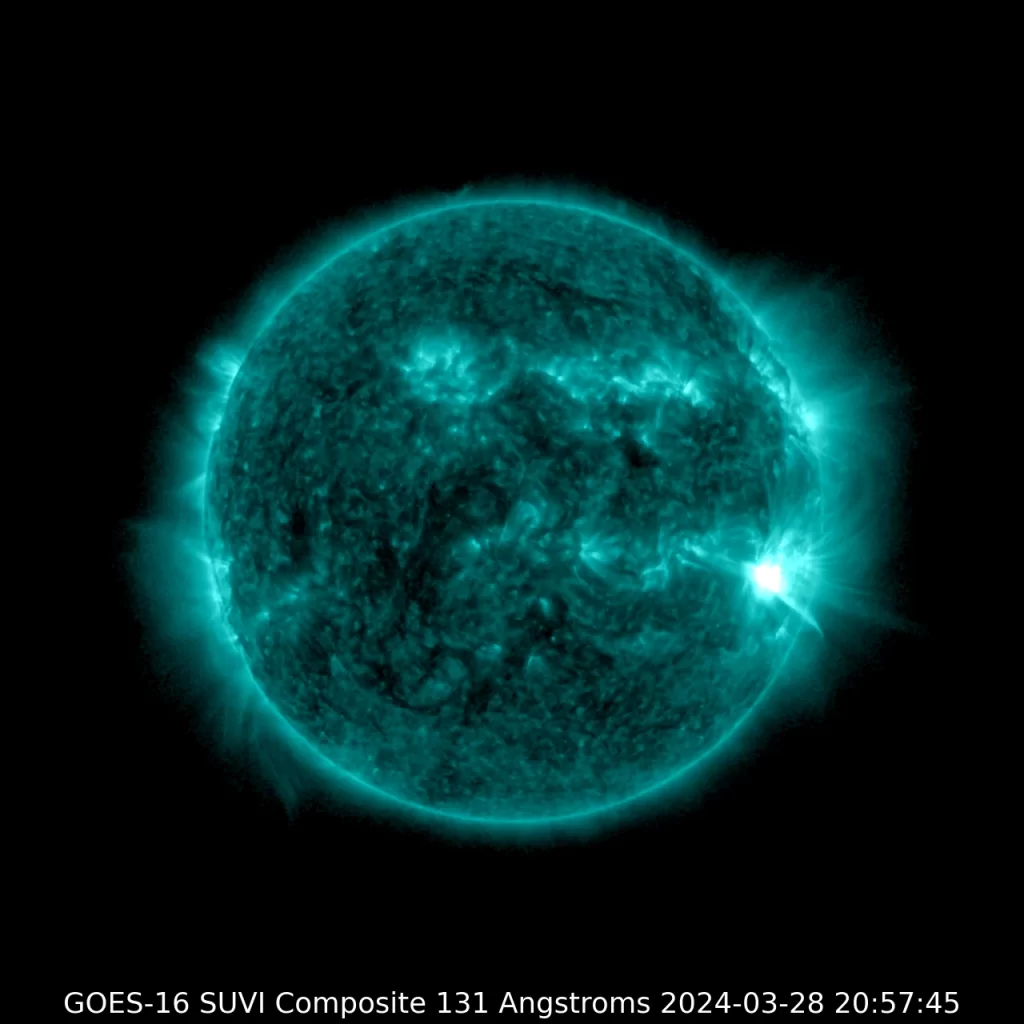
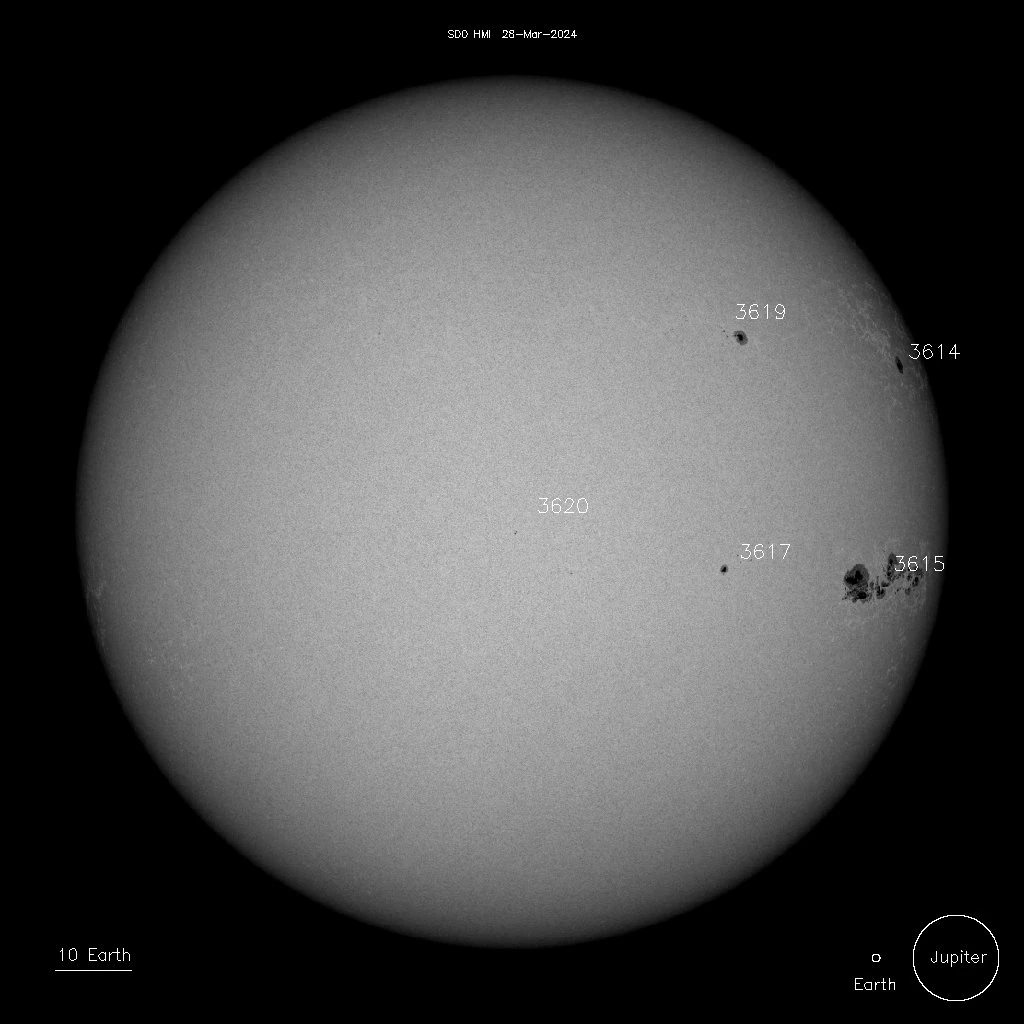
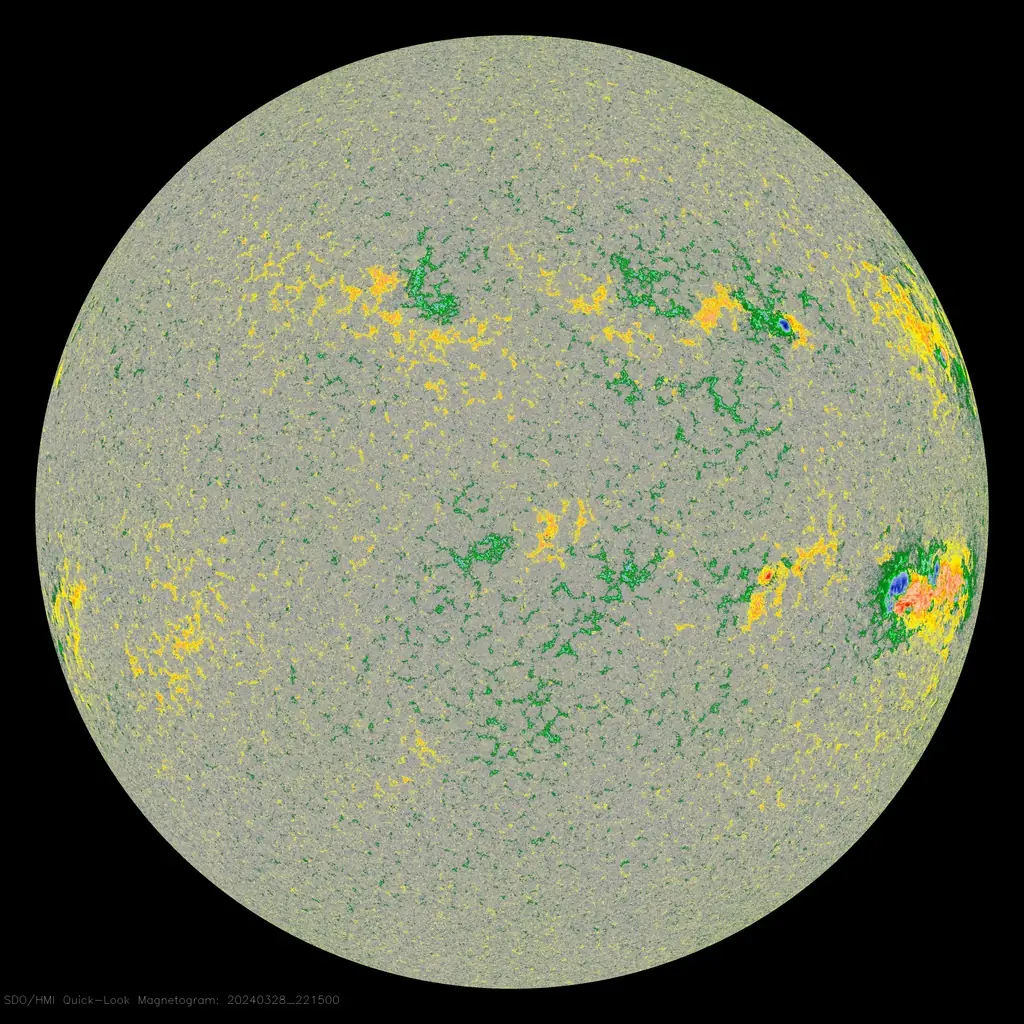
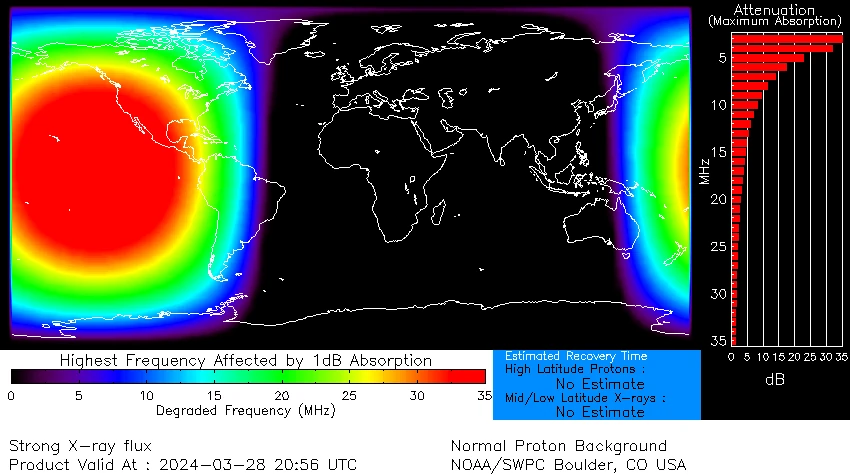
Solar activity is expected to continue at moderate to high levels through March 29, with a chance for an X-class flare (25%), primarily due to the flare potential of Region 3615. Probabilities decrease to just a chance for M-class flares on March 30 as AR 3615 rotates beyond the western limb.
A chance for S1 – Minor solar radiation storms will persist through March 29 primarily due to the potential and location of AR 3615. Probabilities for an event decrease to just a slight chance on March 30 as AR 3615 rotates beyond the western limb. There is a chance for the greater than 2 MeV electron flux to reach high levels beginning on March 28.
Solar wind parameters over the past 36 hours reflected the waning influence of a CME that left the Sun on March 23 and ambient-like solar wind conditions are expected to return by late March 28. Slightly elevated parameters are possible again by late March 29 under weak, negative polarity coronal hole high speed stream (CH HSS) influences, which will continue through March 30.
The geomagnetic field is at quiet levels and is expected to be at quiet to unsettled levels on March 29 and 30 due to the aforementioned negative polarity CH HSS.
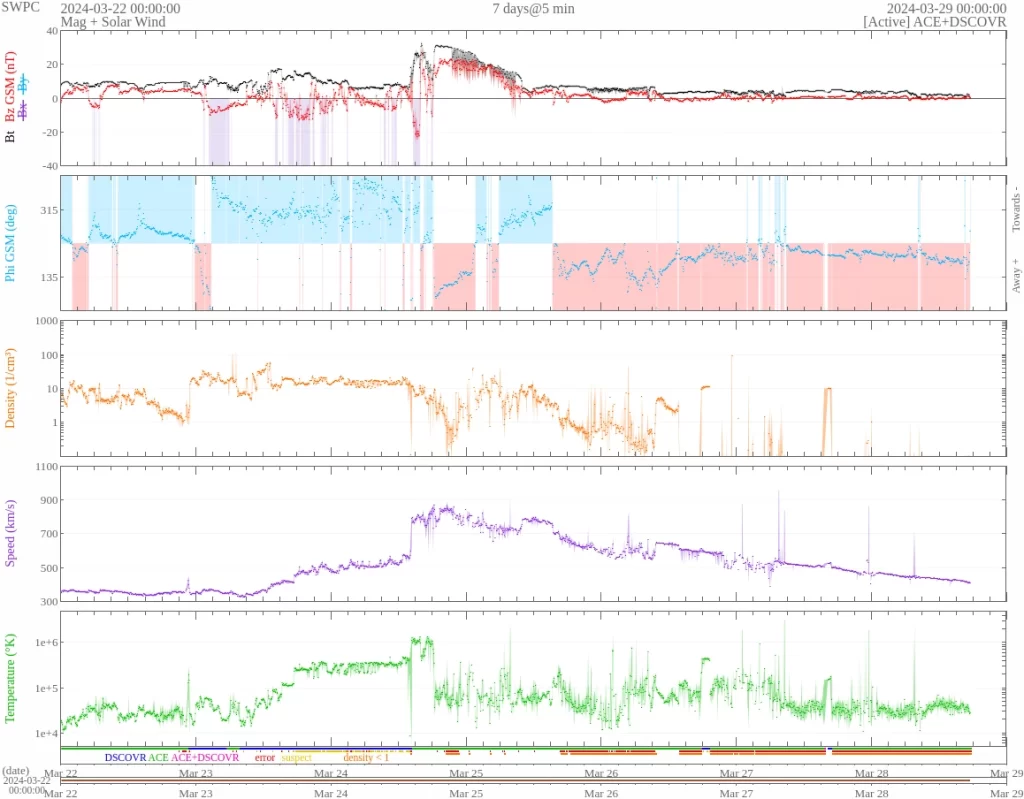
Featured image credit: NASA SDO/AIA 131, Helioviewer, The Watchers

## Comment SPAM Protection: Shield Security marked this comment as “Pending Moderation”. Reason: Human SPAM filter found “thankyou for” in “comment_content” ##
thankyou for keeping us upto date love anything to do with space